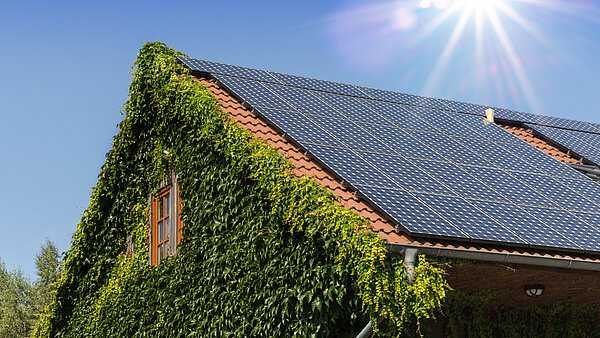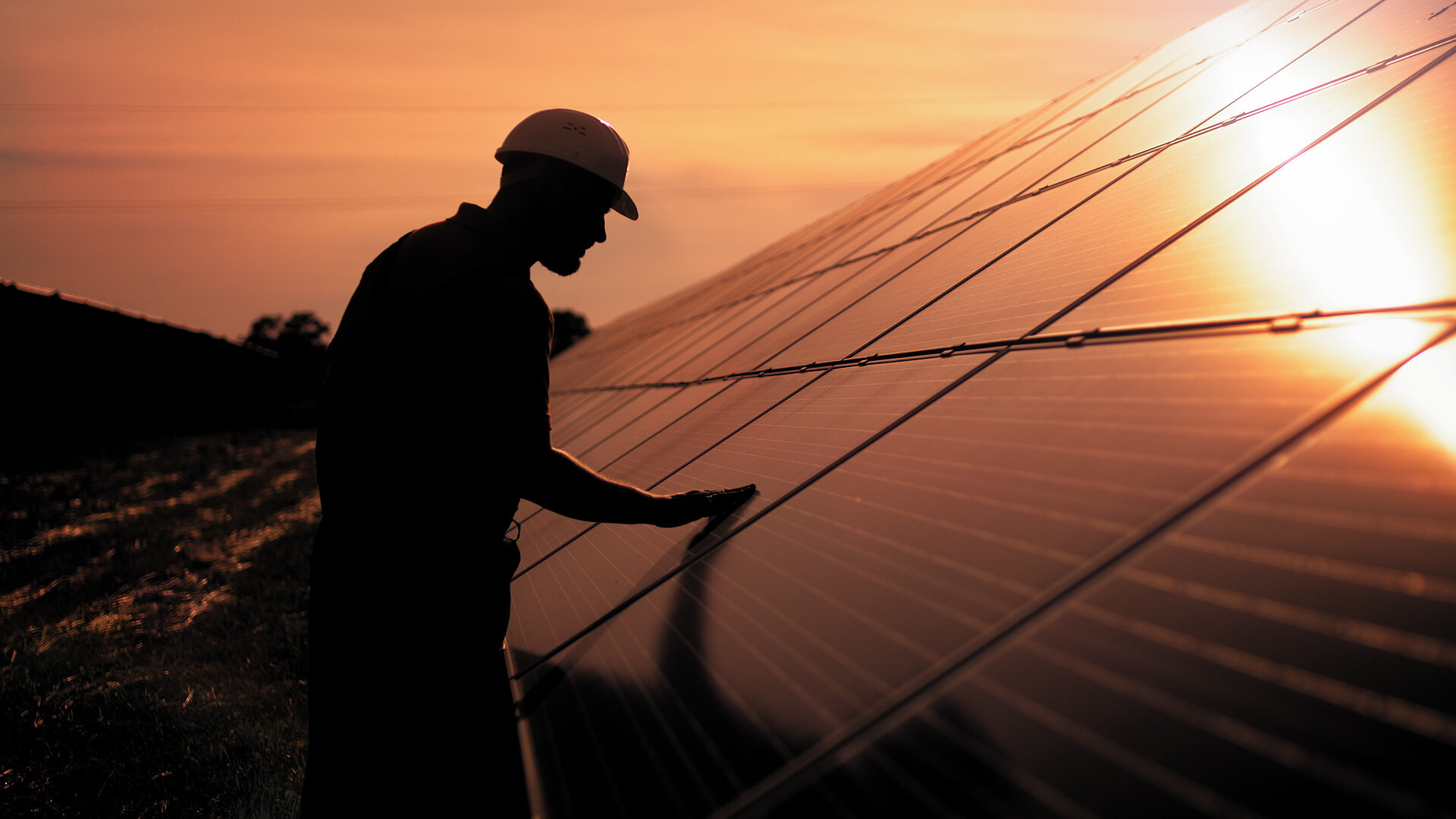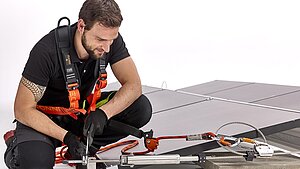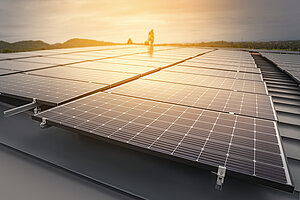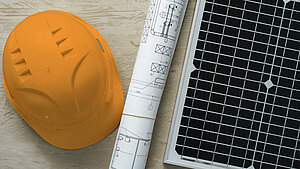For you personally and also for companies, maintenance is very important, because such defects – often hidden – can destabilise the safety system as a whole. In extreme cases, this results in the fall protection system no longer being capable of withstanding the forces which arise during accidents. Consequences can be serious – not only for those directly affected and their families, but also for the operator of the PV system. Ignoring for a moment the possibility of seriously injured employees and related time off work, severe penalties and compensation payments also threaten in the event of negligence.
So always remember: The servicing and inspection of fall protection systems for PV installations on a pitched or flat roof not only makes sense – it is a mandatory legal requirement. In most cases, the safety system must be subject to a thorough inspection once per year by an appropriately certified person. And this applies throughout the lifetime of the system. This also applies to personal protective equipment, lanyards, and single anchor points for the PV system. All cable and rail sliders too must be inspected and maintained every year as standard.
Attention: Fall protection systems used in the chemical industry or for indoor swimming pools are often exposed to severe stresses, such as chemical vapours, etc. For this reason, the inspection intervals should be shorter, especially in this range of applications.
In the INNOTECH training programme, the subjects of servicing and inspection of fall protection for PV installations on a roof are therefore dealt with in depth.
4 reasons for professional planning and installation of PV systems
During the installation of the PV system and its associated fall protection, it must be ensured that everything is correctly fastened and documented. This is important for the following 4 reasons:
- The system must be documented in writing and with photos, otherwise it is not permitted to use the system.
- In the event of an emergency, lives can be saved only if the fall protection system has been professionally planned, installed, and documented.
- Only in this case are you on the safe side in terms of the law.
- And only this way do you save yourself from unpleasant and often expensive surprises when the first inspection date looms one year after the system’s installation.
Correct servicing and inspection
Ideally, you should conclude a servicing contract for your solar power plant and the associated fall protection system(duration generally 3 years) – best of all with the same certified solar technician or installer who installed everything on your roof. This not only saves time, but you also obtain everything from a single source. In addition, you can be sure that your solar technician always knows exactly what needs to be inspected.
Ensure from the very start that during the installation there is full documentation of the components, anchor points, posts, and connections on the substructure, by means of photographs, and that a comprehensive dowel log is created. If this is not done, then in extreme cases it may not be possible to perform servicing or inspection. The consequence of this would be that access to the PV system would be forbidden. In some cases, the fall protection system would then have to be dismounted and reinstalled. You can clearly see: If documentation is poor or even completely absent during installation, then high costs may arise subsequently.
Digital documentation from INNOTECH
With our web app INNO|doc, you, your solar technicians and installers can conveniently manage all your projects and customers by means of a single tool. Full documentation of the installation is important for being able to service the systems later on. In addition, INNO|doc sends e-mail reminders completely automatically for the legally required annual inspection. As well as that, the finalised documentation can be generated directly from the program – including all project-relevant details, such as photos, certificates, product descriptions, etc. And with INNO|doc every subsequent inspection and service can be performed very quickly without excessive effort, because all data is accessible at the press of a button.
The inspection in detail
Inspection and servicing can be performed either by an installer/solar technician certified by INNOTECH, or by TÜV, a certified engineer of your choice, or another expert. However, even before this person accesses the system on the roof, the inspecting body will review all product descriptions and the documentation in detail.
Checklist for servicing/inspection of a lifeline system:
- Is the roof sealing damaged or corroded?
- Do visible components of the fastenings display deformation or signs of corrosion, and are all threaded joints secured or tightly seated?
- Visual inspection of strands of stainless steel cable
- Is deformation of the intermediate bracket visible? Are the weld seams and all threaded joints in good condition?
- Inspection of the structure and weld seams of the corner and end fastenings
- Check of wedge wraparounds, indicator clamps, cable pre-tension, and welding points (crevice corrosion) of the end locks
- Inspection of threaded joints and slide gap of sliders
- Check whether an original INNOTECH carabiner is being used
- Check of system functionality
Please ensure that the inspection and servicing tasks on the fall protection system for your PV installation on the roof are documented in full detail by means of logs and photos. This is the only way to demonstrate later that at the time of inspection the safety solution was in perfect order and therefore legally compliant. This is important for staying on the safe side in terms of the law. When an installer or solar technician is on your roof to inspect the fall protection system, use the opportunity to have servicing and cleaning of the solar installation itself performed.
This is essential for trouble-free, maximum performance of the solar panels. Our partner installers have the know-how to perform all these tasks themselves at the same time! Unfortunately, practical experience often shows that, out of laziness, the inspection and servicing of the safety system are neglected or even completely omitted. However, as the operator of a solar installation on a roof, you need to be aware that these regular checks are essential for the correct functioning of the fall protection system.
Without these elementary components of your safety concept, your feeling of safety will be an illusion! And, from the viewpoint of your insurance company, in the event of an emergency this can cause insurance benefits to be held back or not even awarded in the first place. Compare this with your car! It too must undergo a roadworthiness test at regular intervals to be allowed on the public highway. Here too, the consequences can be very unpleasant if you drive the car after its certification has expired and you are possibly involved in an accident.
The most frequent defects are
Fasteners unsuitable for the respective substructure are often used during installation of the fall protection system, or there is confusion regarding the correct fastening sets. This means that safety is no longer ensured. Unfortunately, time and again it occurs that the safety solution was incorrectly or insufficiently documented. In addition, at such an exposed location as a roof, loose mounts or corrosion of individual parts and components can naturally arise, and if these are not dealt with, they can become safety risks.
If your fall protection system displays such defects, then access to the PV equipment would be temporarily forbidden. On the basis of the photo documentation we create the individual parts list for potential repair tasks, in order that your installer or solar technician can create a precisely tailored proposal for you. All defects are then remedied, so that your fall protection system is operational again as soon as possible, and above all safe. In an emergency (see above) the fall protection system must be completely dismantled and rebuilt from new.
You should therefore have your fall protection system inspected and serviced regularly, thus securing you the numerous resulting benefits. This means that you are always protected, not just in terms of safety and functionality of the safety solution, but also under the law. In addition, from the outset smaller defects are prevented from becoming larger (andtherefore more expensive) problems.
Summary
The safety of your fall protection system is always only as good as the professionalism of the installation and the regularity of the inspection and servicing tasks. This all starts and ends with the full documentation of all tasks on the fall protection system – this is the only way to keep it permanently functional and to save lives in an emergency. This also helps you to protect against expensive and unpleasant surprises.
Do you have further questions about servicing and inspection of your fall protection system? Then simply contact us. Our experts will be pleased to help and advise.
You will also find additional information in our new manual!








![[Translate to Englisch:] [Translate to Englisch:]](https://www.innotech-safety.com/fileadmin/_processed_/1/a/csm_Mehrere_PV-Kunden_gleichzeitig_betreuen__kann_oft_zur_Riesenherausforderung_werden-header_c1a520d846.jpg)

















